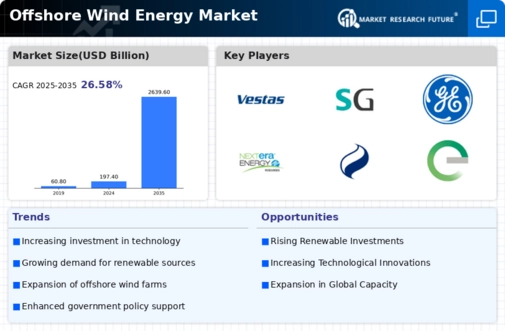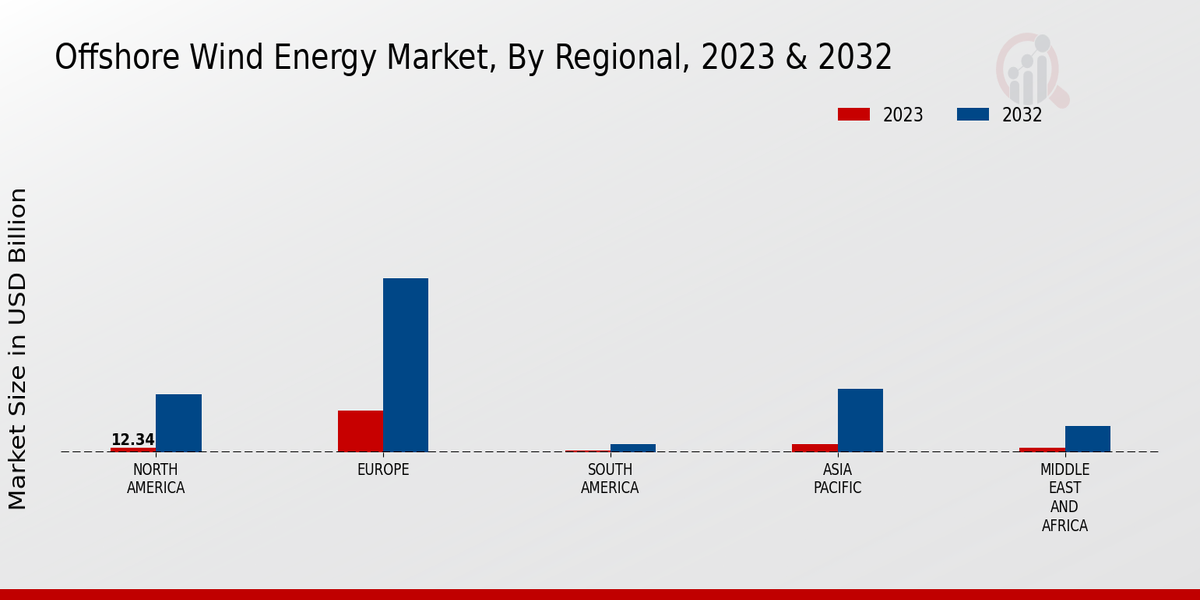Growing Energy Demand
The Global Offshore Wind Energy Market Industry is experiencing a surge in demand for renewable energy sources, driven by increasing global energy consumption. As countries strive to meet their energy needs sustainably, offshore wind energy emerges as a viable solution. In 2024, the market is valued at approximately 197.4 USD Billion, reflecting the urgent need for cleaner energy alternatives. This demand is expected to escalate, with projections indicating a market value of 2639.6 USD Billion by 2035. The compound annual growth rate of 26.58% from 2025 to 2035 underscores the industry's potential to address energy shortages while contributing to climate goals.
Market Growth Projections
The Global Offshore Wind Energy Market Industry is poised for remarkable growth, with projections indicating a market value of 2639.6 USD Billion by 2035. This growth is underpinned by a compound annual growth rate of 26.58% from 2025 to 2035, reflecting the increasing adoption of offshore wind technology worldwide. The market's expansion is driven by a combination of factors, including rising energy demand, supportive government policies, and technological advancements. As countries continue to invest in renewable energy infrastructure, the offshore wind sector is likely to play a crucial role in achieving global sustainability targets.
Technological Advancements
Technological innovations are transforming the Global Offshore Wind Energy Market Industry, enhancing efficiency and reducing costs. Advances in turbine design, such as larger rotor diameters and higher capacity factors, enable the generation of more energy from offshore installations. Additionally, improvements in installation techniques and maintenance practices contribute to lower operational costs. These advancements are crucial as they make offshore wind projects more economically viable, attracting investment. As the industry continues to evolve, the integration of digital technologies and smart grid solutions may further optimize energy production and distribution, positioning offshore wind energy as a leading player in the global energy landscape.
Government Policies and Incentives
Supportive government policies and incentives play a pivotal role in the Global Offshore Wind Energy Market Industry. Many nations are implementing favorable regulations and financial incentives to promote the development of offshore wind projects. For instance, countries like the United States and Germany have established ambitious renewable energy targets, which include substantial investments in offshore wind infrastructure. These initiatives not only enhance investor confidence but also stimulate job creation in the renewable sector. As governments prioritize energy transition strategies, the market is likely to witness accelerated growth, further solidifying offshore wind energy's position as a cornerstone of future energy systems.
Environmental Concerns and Climate Change
The Global Offshore Wind Energy Market Industry is significantly influenced by growing environmental concerns and the urgent need to combat climate change. As the effects of climate change become increasingly evident, there is a collective push towards reducing greenhouse gas emissions. Offshore wind energy offers a clean and sustainable alternative to fossil fuels, aligning with global climate goals. Countries are recognizing the importance of transitioning to renewable energy sources to mitigate environmental impacts. This shift not only aids in achieving national and international climate commitments but also fosters public support for offshore wind projects, further driving market growth.
Investment Opportunities and Economic Growth
The Global Offshore Wind Energy Market Industry presents substantial investment opportunities, attracting both public and private sector funding. As the market expands, it is likely to create numerous jobs and stimulate economic growth in coastal regions. The anticipated growth trajectory, with a market value projected to reach 2639.6 USD Billion by 2035, indicates a robust investment landscape. Furthermore, the development of offshore wind farms can lead to ancillary economic benefits, such as increased tourism and improved local infrastructure. Investors are increasingly recognizing the potential returns associated with offshore wind projects, contributing to the industry's overall expansion.


















